
Also by
Valerie Ann Worwood
AROMATHERAPY FOR THE HEALTHY CHILD
THE COMPLETE BOOK OF
ESSENTIAL OILS & AROMATHERAPY
ESSENTIAL AROMATHERAPY
(WITH SUSAN WORWOOD)
THE FRAGRANT MIND
SCENTS & SCENTUALITY

New World Library
14 Pamaron Way
Novato, California 94949
1999 Valerie Ann Worwood
Published in 1999 by New World Library as The Fragrant Heavens
All rights reserved. This book may not be reproduced in whole or in part, stored in a retrieval system, or transmitted in any form or by any means electronic, mechanical, or other without written permission from the publisher, except by a reviewer, who may quote brief passages in a review.
The material in this book is not meant to take the place of professional spiritual guidance or medical diagnosis and treatment by a qualified medical practitioner. All recommendations herein contained are believed to be effective, but since actual use of essential oils by others is beyond the authors and publishers control, no expressed or implied guarantee as to the effects of their use can be given nor liability taken.
Text layout and design by Margaret Copeland, Terragraphics Illustrations on page 300 by Edwina Hammin
Library of Congress Cataloging-in-Publication Data
Worwood, Valerie Ann
Aromatherapy for the soul : healing the spirit with fragrance and essential oils / by Valerie Ann Worwood.
p. cm.
Includes bibliographical references and index.
1. Aromatherapy. 2. Spiritualism. I. Title.
RM666.A68W677 1998 | 98-22936 |
615.321dc21
First printing of Aromatherapy for the Soul, September 2006
Printed in Canada on acid-free, partially recycled paper
ISBN-10: 1-57731-562-6
ISBN-13: 978-1-57731-562-9
Distributed by Publishers Group West
10 9 8 7 6 5 4 3 2 1
For Nan and Pop, who reminded me that there are more things between heaven and earth than we will ever know about, and Uncle Will, who understood the spiritual importance of fragrant plants.
There are eighty myriads of trees in every corner of Paradise, the meanest among them choicer than all the spice trees. In every corner there are sixty myriads of angels singing with sweet voices, and the tree of life stands in the middle and shades the whole of Paradise. It has fifteen thousand tastes, each different from the other, and the perfumes thereof vary likewise. Over it hang seven clouds of glory, and winds blow upon it from all sides, so that its odor is wafted from one end of the world to the other.
Louis Ginzberg, Legends of the Bible
Contents
The Christian Tradition
Chapter 8: Multidimensional Bodies
To see a World in a Grain of Sand
And a Heaven in a Wild Flower,
Hold Infinity in the palm of your hand
And Eternity in an hour.
William Blake,
Auguries of Innocence
 T HE OMNIPRESENT D IVINE has been put through the prism of human experience, and is expressed in many different ways. Some people focus their ideas of the Divine on an original creator, God, and venerate prophets of that God. Some spiritual traditions pay reverence to the whole living environment, paying respect to the vast landscape and all that lives and grows on it. Others turn more inward and use specific mental exercises to connect with the oneness of the universe. Whether we pray to God, whether we pay homage to Mother Earth, Father Sky, or the spirit of the sage, whether we look to the stars, or seek the stars within, spirituality is about making connections. We may take different routes, but the destination is the same.
T HE OMNIPRESENT D IVINE has been put through the prism of human experience, and is expressed in many different ways. Some people focus their ideas of the Divine on an original creator, God, and venerate prophets of that God. Some spiritual traditions pay reverence to the whole living environment, paying respect to the vast landscape and all that lives and grows on it. Others turn more inward and use specific mental exercises to connect with the oneness of the universe. Whether we pray to God, whether we pay homage to Mother Earth, Father Sky, or the spirit of the sage, whether we look to the stars, or seek the stars within, spirituality is about making connections. We may take different routes, but the destination is the same.
Although spiritual practices differ greatly, its no coincidence that so many use fragrance. Every evening in India, the air is rich with the aroma of incense burning at home shrines. Smoke fragrant with the aroma of the smoldering resins, frankincense and myrrh, fills the air in Ethiopian Coptic and Orthodox Christian churches. Muslims use lavish quantities of sweet-smelling rose water to impart fragrance to mosques and other holy places. In Native American sweat lodges, for ritual purification and spiritual connection, the fragrant herbs of sage, cedar, and sweetgrass are put on the hot rocks to release their aroma molecules into the humid atmosphere. Clouds of fragrant smoke rise from handfuls of incense sticks, placed at Chinese Buddhist shrines. In the habdalah ceremony in Jewish homes at the close of the Sabbath every Saturday night, blessings for light and fragrance are recited over the candle and spice box. Each dawn, Tibetans go up on the roofs of their houses and light stoves in which they burn bundles of juniperto force the sky door open. As plumes of smoke rise from the houses and fragrance fills the air, prayers can be heard.
Its the essential oils in fragrant plant materials, the aroma molecules, that are released by these various practices they are what gives incense its aroma, just as its the essential oil in pine needles that gives a pine forest its uplifting quality. Essential oils exude from plants into their headspace, where we smell them when walking among nature, and humans have devised many methods to capture this essence of the plant, the molecules so many people have chosen to help them connect with and feel the Divine.
Fragrance has been said to alert the gods to our presence, and act as a sign that the human mind is focused and receptive to spiritual guidance. In many cultures sweet-smelling aromas were and still are associated with divinity with gods, heavens, angels, and saints all being attributed with having a delightful fragrance. By oneself being fragrant or burning fragrant material, a link or bridge could be formed to the Divine. In Legends of the Bible, Louis Ginzberg tells us that the Tabernacle had two altars: one brass, and used for food offerings, corresponding to the body; and one of gold, used for offering spices and sweet incense for the soul takes delight in perfumes only.
Many reasons have been given for the use of fragrance for spiritual assistance, but whats equally interesting is the sheer endurance of the practice. Its not an old habit thats dying out. On the contrary, as well as continuing in the older spiritual traditions, fragrance is being used also by the new. As I travel and visit places and people, I can see fragrant oils being used in all kinds of contexts, including different forms of healing, counseling, prayer, and meditation.
Next page
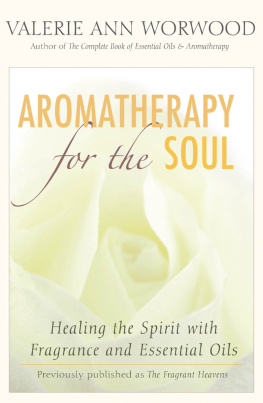
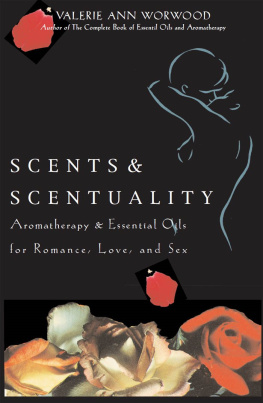
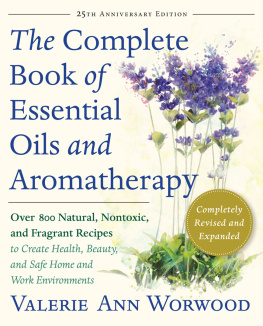


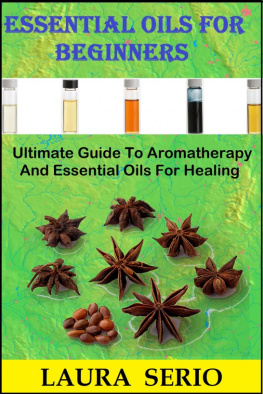
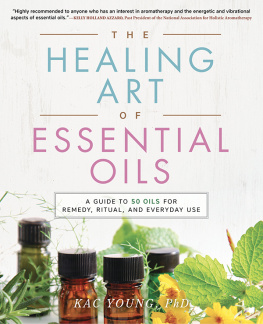
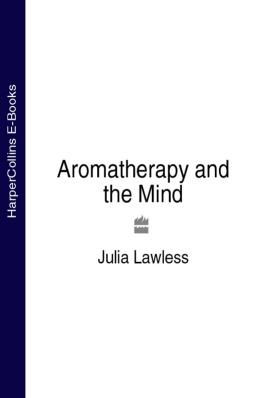




 T HE OMNIPRESENT D IVINE has been put through the prism of human experience, and is expressed in many different ways. Some people focus their ideas of the Divine on an original creator, God, and venerate prophets of that God. Some spiritual traditions pay reverence to the whole living environment, paying respect to the vast landscape and all that lives and grows on it. Others turn more inward and use specific mental exercises to connect with the oneness of the universe. Whether we pray to God, whether we pay homage to Mother Earth, Father Sky, or the spirit of the sage, whether we look to the stars, or seek the stars within, spirituality is about making connections. We may take different routes, but the destination is the same.
T HE OMNIPRESENT D IVINE has been put through the prism of human experience, and is expressed in many different ways. Some people focus their ideas of the Divine on an original creator, God, and venerate prophets of that God. Some spiritual traditions pay reverence to the whole living environment, paying respect to the vast landscape and all that lives and grows on it. Others turn more inward and use specific mental exercises to connect with the oneness of the universe. Whether we pray to God, whether we pay homage to Mother Earth, Father Sky, or the spirit of the sage, whether we look to the stars, or seek the stars within, spirituality is about making connections. We may take different routes, but the destination is the same.